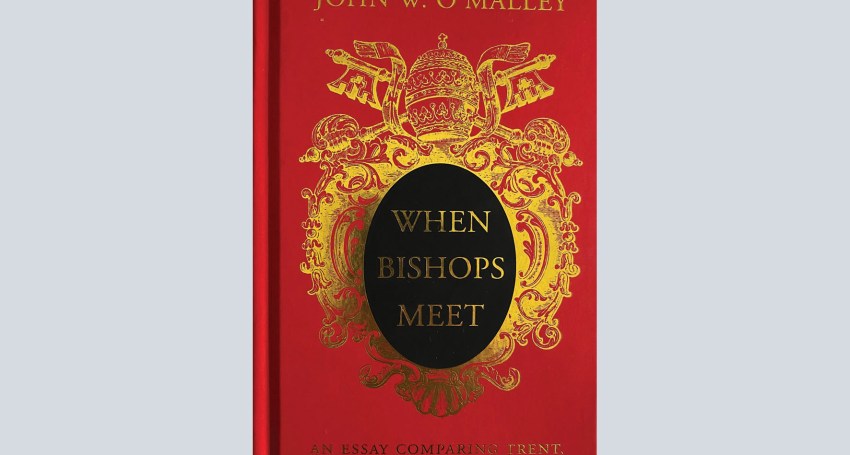
John W O’Malley is an American Jesuit who has written histories of the Council of Trent as well as of the first and second Vatican Councils. In his new book he lucidly compares these meetings held respectively in 1545–1563, 1870 and 1962–65.
He points out that Trent was not, as is often said, convened to oppose Luther’s claims. Instead the Pope reluctantly agreed to the request of Emperor Charles V to convene a Council to find a way to reconcile with Luther and other reformers.
Advertisement
The Council condemned the reformers’ errors but not the persons advocating them which, O’Malley says, indicated a new attitude. He mentions a remarkable parallel between the Council of Trent and recent Synods – the participants at Trent proposed pastoral changes regarding marriage which seemed in contrast with doctrine but they eventually approved these changes.
The Vatican Council of 1870 was aborted because of the invasion of papal Rome by the forces which wanted to make it the capital of Italy. As a result, it managed to approve only two doctrinal decrees and no disciplinary ones. O’Malley points out that the bishops who opposed papal infallibility, even though defeated, ensured that it was expressed in very stringent terms.
It seemed that there might be no other Councils after 1870 but Pius XII considered the possibility, although allegedly deciding that the bishops were too immature for the occasion, and then John XXIII sprang the surprise of the second Vatican Council. O’Malley is enthusiastic about it and looks forward to a Vatican III.
He claims that the distinctive feature of the second Vatican Council was the bishops’ awareness and acceptance of change both in society and the Church. Vatican II was not into denunciation – it preferred dialogue after the Church had felt besieged for a long time. According to O’Malley, the spirit which animated it was reconciliation with the modern world.
‘The battles of Vatican II,’ he writes ‘were battles over the identity of the Church; not over its fundamental dogmas, but over the place, relevance, and respective weight of certain fundamental values in the tradition.’
He explains that the Council participants were willing to accept change on the understanding that it ‘did not mean losing one’s identity but, rather enhancing it or salvaging it from ossification’.
He adds that the Council did not decide what was causing the accelerating change in society and the Church, nor what could be changed in the Church and what were the criteria for it. So these issues are still debated.
Obviously some Catholics since the Council have felt that its changes have threatened their identity. Whereas O’Malley says the Council combined continuity with discontinuity, they see only discontinuity.
The reception of Vatican II was spotty as only some bishops worked at it. News of the Council had reached home even before they did and some Catholics took it as a green light for a silly season deplored by several of those who had prepared the Council’s mindset, such as the French philosopher Jacques Maritain.
Advertisement
The silly season forced successive popes to try to restore order. At the same time, many societies were reshaped by the sexual revolution, the internet and social media revolution, climate fears, globalisation and now the coronavirus pandemic. In addition, there was the blight of clerical sexual abuse.
As a result, the attempts of Pope Francis to revive the elan of the Vatican II takes place in very different conditions from the Council itself when there was a solid Catholicism and a compact avant garde.
One way chosen to apply the Council is through the meetings of local churches. The Synod of the Church in Germany, which began some months ago and will last two years, has the Vatican worried as it seems to favour priestly ordination of married men, further study of the diaconate for women and benedictions for same sex couples. This is in the program of the lay participants who have the support of the convenor Cardinal Reinhard Marx.
Pope Francis has warned that the German church cannot take initiatives which contrast with the doctrines of the Church as a whole. Cardinal Marx stepped down as head of the German Bishops’ conference at the end of March although he has not yet reached his retirement age. Perhaps he was nudged by the Vatican.
This is an example of the fact that, more than 50 years after Vatican II, Catholics are divided about its consequences with an urgent need to strengthen trust between its members to enable criticisms to be made without causing resentment.
Some find the debate disconcerting, others that it is a bracing challenge. Michael O’Malley’s book on the nature, aspirations and problems of Councils provides a needed perspective on present events.
When Bishops Meet
Written by John W O’Malley
Published by Harvard University Press
– Reviewed by Desmond O’Grady







Comments
Show comments Hide comments